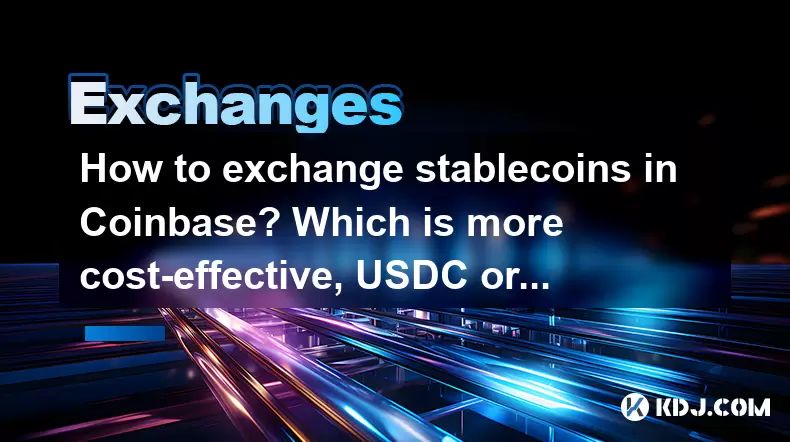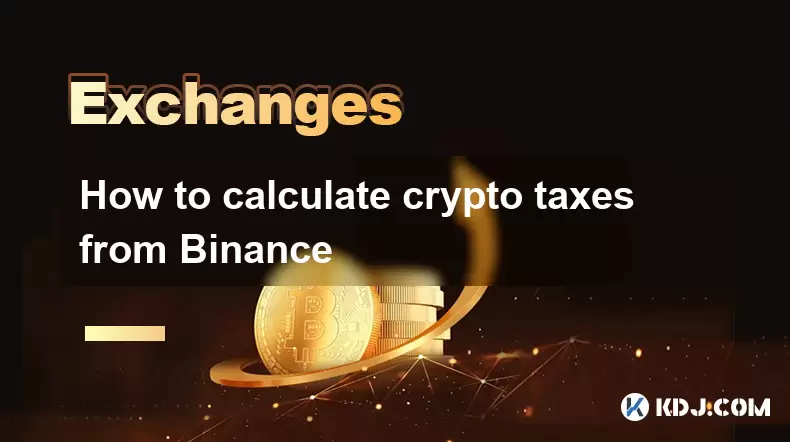-
 Bitcoin
Bitcoin $117500
2.15% -
 Ethereum
Ethereum $3911
6.19% -
 XRP
XRP $3.316
10.79% -
 Tether USDt
Tether USDt $1.000
0.01% -
 BNB
BNB $787.2
2.24% -
 Solana
Solana $175.2
4.15% -
 USDC
USDC $0.9999
0.00% -
 Dogecoin
Dogecoin $0.2225
8.40% -
 TRON
TRON $0.3383
0.28% -
 Cardano
Cardano $0.7868
6.02% -
 Stellar
Stellar $0.4382
9.34% -
 Hyperliquid
Hyperliquid $40.92
7.56% -
 Sui
Sui $3.764
7.63% -
 Chainlink
Chainlink $18.48
10.66% -
 Bitcoin Cash
Bitcoin Cash $582.1
1.88% -
 Hedera
Hedera $0.2601
6.30% -
 Avalanche
Avalanche $23.33
4.94% -
 Ethena USDe
Ethena USDe $1.001
0.02% -
 Litecoin
Litecoin $122.3
2.04% -
 UNUS SED LEO
UNUS SED LEO $8.969
-0.27% -
 Toncoin
Toncoin $3.339
0.86% -
 Shiba Inu
Shiba Inu $0.00001287
4.30% -
 Uniswap
Uniswap $10.43
7.38% -
 Polkadot
Polkadot $3.861
5.08% -
 Dai
Dai $1.000
0.02% -
 Bitget Token
Bitget Token $4.513
3.41% -
 Monero
Monero $267.7
-6.18% -
 Cronos
Cronos $0.1499
4.14% -
 Pepe
Pepe $0.00001110
5.15% -
 Aave
Aave $284.9
8.28%
How to exchange stablecoins in Coinbase? Which is more cost-effective, USDC or DAI?
Exchanging stablecoins on Coinbase is easy: log in, navigate to trade, select USDC or DAI, enter amount, confirm, and wait. Consider fees and liquidity for cost-effectiveness.
May 16, 2025 at 07:15 pm

Exchanging stablecoins on Coinbase is a straightforward process that allows users to seamlessly convert between different types of cryptocurrencies pegged to the US dollar, such as USDC and DAI. In this article, we will walk through the steps required to exchange stablecoins on Coinbase and compare the cost-effectiveness of using USDC versus DAI.
Understanding Stablecoins on Coinbase
Stablecoins are cryptocurrencies designed to minimize the volatility typically associated with other digital assets like Bitcoin and Ethereum. They achieve this by pegging their value to a stable asset, such as the US dollar. On Coinbase, two of the most popular stablecoins are USDC and DAI. USDC is issued by Circle and Coinbase, while DAI is a decentralized stablecoin issued by the MakerDAO system.
Steps to Exchange Stablecoins on Coinbase
To exchange stablecoins on Coinbase, follow these detailed steps:
- Log into your Coinbase account: Open the Coinbase app or website and enter your login credentials.
- Navigate to the trading section: Once logged in, go to the "Trade" section on the app or the "Buy/Sell" tab on the website.
- Select the stablecoin you want to exchange: Choose the stablecoin you currently hold (e.g., USDC) as the "From" currency and the stablecoin you want to receive (e.g., DAI) as the "To" currency.
- Enter the amount to exchange: Specify the amount of the stablecoin you wish to convert. Coinbase will automatically calculate the equivalent amount in the target stablecoin based on the current market rate.
- Review and confirm the transaction: Double-check the details of the exchange, including the amount and the fees. Once satisfied, click "Confirm" to proceed with the exchange.
- Wait for the transaction to complete: The exchange will be processed, and the new stablecoin will be credited to your Coinbase wallet. The processing time can vary depending on network conditions.
Cost-Effectiveness: USDC vs. DAI
When considering the cost-effectiveness of using USDC versus DAI, several factors come into play:
Transaction Fees
Coinbase charges transaction fees for exchanging stablecoins, and these fees can vary based on the method of payment and the size of the transaction. Both USDC and DAI are subject to these fees, but the specific fee structure may differ slightly. It's essential to check the current fee schedule on Coinbase before making a decision.
Network Fees
USDC transactions typically use the Ethereum network, and thus, they are subject to Ethereum gas fees. These fees can fluctuate significantly based on network congestion. DAI transactions also use the Ethereum network, meaning they are subject to the same gas fees. However, DAI has the added complexity of being managed by the MakerDAO system, which may introduce additional costs for certain operations.
Liquidity and Market Impact
USDC tends to have higher liquidity compared to DAI, which can result in tighter bid-ask spreads and lower slippage when executing large trades. Higher liquidity generally leads to more cost-effective trading, as traders can buy or sell larger amounts without significantly affecting the market price.
Stability and Pegging Mechanism
USDC is backed by US dollar reserves held in regulated financial institutions, ensuring a stable peg to the dollar. DAI, on the other hand, is maintained through a decentralized system of collateralized debt positions (CDPs) and is designed to maintain its peg through algorithmic adjustments. While both stablecoins aim to maintain a 1:1 peg to the US dollar, the mechanisms they use can result in slight deviations, which may affect their cost-effectiveness in certain scenarios.
Choosing Between USDC and DAI on Coinbase
When deciding which stablecoin to use on Coinbase, consider the following factors:
- Intended use: If you are primarily using stablecoins for trading or as a temporary store of value, USDC might be more cost-effective due to its higher liquidity and simpler pegging mechanism. If you are interested in participating in the decentralized finance (DeFi) ecosystem, DAI might be more suitable due to its integration with various DeFi protocols.
- Fee considerations: Compare the transaction fees and network fees for both USDC and DAI at the time of your exchange. These fees can change frequently, so staying informed is crucial.
- Risk tolerance: USDC's centralized backing might appeal to users who prefer a more traditional approach to stability, while DAI's decentralized nature might attract those who value the potential for greater autonomy and innovation.
Practical Tips for Exchanging Stablecoins on Coinbase
To maximize the efficiency of your stablecoin exchanges on Coinbase, consider the following tips:
- Monitor transaction fees: Regularly check Coinbase's fee schedule to understand the costs associated with exchanging USDC and DAI. This can help you plan your exchanges more effectively.
- Time your transactions: Since network fees can vary based on Ethereum network congestion, consider timing your exchanges during periods of lower activity to minimize these costs.
- Use limit orders: If available on Coinbase, using limit orders can help you control the price at which you exchange your stablecoins, potentially saving on costs associated with market volatility.
- Stay informed about stablecoin developments: Both USDC and DAI are subject to ongoing developments and updates. Staying informed about these can help you make more informed decisions about which stablecoin to use.
Frequently Asked Questions
Q: Can I exchange stablecoins on Coinbase Pro, and how does it differ from the regular Coinbase platform?
A: Yes, you can exchange stablecoins on Coinbase Pro. Coinbase Pro offers more advanced trading features, such as limit orders and stop orders, which can be beneficial for more experienced traders looking to optimize their exchanges. The fees on Coinbase Pro are typically lower than those on the regular Coinbase platform, making it a more cost-effective option for frequent traders.
Q: Are there any limits on the amount of stablecoins I can exchange on Coinbase?
A: Coinbase has limits on the amount of cryptocurrency you can buy, sell, or exchange, which can vary based on your account verification level and the method of payment. It's important to check your specific limits on the Coinbase website or app before attempting to exchange large amounts of stablecoins.
Q: How can I transfer stablecoins from Coinbase to an external wallet?
A: To transfer stablecoins from Coinbase to an external wallet, follow these steps:
- Log into your Coinbase account.
- Navigate to the "Send/Receive" section.
- Select the stablecoin you want to transfer (e.g., USDC or DAI).
- Enter the recipient's wallet address.
- Specify the amount you want to transfer.
- Review the transaction details and fees.
- Confirm the transaction and wait for it to be processed on the blockchain.
Q: Can I use stablecoins on Coinbase for staking or earning interest?
A: Currently, Coinbase offers staking rewards for certain cryptocurrencies, but as of the latest information, stablecoins like USDC and DAI are not eligible for staking rewards on Coinbase. However, you can use these stablecoins to participate in DeFi protocols outside of Coinbase to earn interest or yield.
Disclaimer:info@kdj.com
The information provided is not trading advice. kdj.com does not assume any responsibility for any investments made based on the information provided in this article. Cryptocurrencies are highly volatile and it is highly recommended that you invest with caution after thorough research!
If you believe that the content used on this website infringes your copyright, please contact us immediately (info@kdj.com) and we will delete it promptly.
- Tron's Sell-Off Spurs Altcoin Shift: What's Next for TRX?
- 2025-08-08 08:30:12
- RUVI Presale: Is the Growth Potential Real?
- 2025-08-08 09:10:12
- Sleep Token's US Takeover: Thornhill Rides the 'Even In Arcadia' Wave
- 2025-08-08 08:30:12
- FTT Token's Wild Ride: Creditor Repayments vs. Market Drop - A New Yorker's Take
- 2025-08-08 07:10:12
- Floki Crypto Price Prediction: Riding the Robinhood Rocket or Just a Meme?
- 2025-08-08 07:15:12
- EigenLayer, Restaking, and Ethereum: Navigating the Hype and the Hazards
- 2025-08-08 06:30:12
Related knowledge

How to use margin trading on Poloniex
Aug 08,2025 at 09:50am
Understanding Margin Trading on Poloniex

How to use advanced trading on Gemini
Aug 08,2025 at 04:07am
Understanding Advanced Trading on GeminiAdvanced trading on Gemini refers to a suite of tools and order types designed for experienced traders who wan...

How to deposit USD on Bitstamp
Aug 07,2025 at 05:18pm
Understanding Bitstamp and USD DepositsBitstamp is one of the longest-standing cryptocurrency exchanges in the industry, offering users the ability to...

How to use the Kraken Pro interface
Aug 08,2025 at 09:57am
Understanding the Kraken Pro Interface LayoutThe Kraken Pro interface is designed for both novice and experienced traders seeking a streamlined experi...

How to find my transaction ID on Gemini
Aug 08,2025 at 12:50am
Understanding the Transaction ID in Cryptocurrency ExchangesA transaction ID (TXID) is a unique alphanumeric string that identifies a specific transfe...

How to calculate crypto taxes from Binance
Aug 08,2025 at 07:56am
Understanding Cryptocurrency Taxation on BinanceCalculating crypto taxes from Binance requires a clear understanding of how tax authorities classify d...

How to use margin trading on Poloniex
Aug 08,2025 at 09:50am
Understanding Margin Trading on Poloniex

How to use advanced trading on Gemini
Aug 08,2025 at 04:07am
Understanding Advanced Trading on GeminiAdvanced trading on Gemini refers to a suite of tools and order types designed for experienced traders who wan...

How to deposit USD on Bitstamp
Aug 07,2025 at 05:18pm
Understanding Bitstamp and USD DepositsBitstamp is one of the longest-standing cryptocurrency exchanges in the industry, offering users the ability to...

How to use the Kraken Pro interface
Aug 08,2025 at 09:57am
Understanding the Kraken Pro Interface LayoutThe Kraken Pro interface is designed for both novice and experienced traders seeking a streamlined experi...

How to find my transaction ID on Gemini
Aug 08,2025 at 12:50am
Understanding the Transaction ID in Cryptocurrency ExchangesA transaction ID (TXID) is a unique alphanumeric string that identifies a specific transfe...

How to calculate crypto taxes from Binance
Aug 08,2025 at 07:56am
Understanding Cryptocurrency Taxation on BinanceCalculating crypto taxes from Binance requires a clear understanding of how tax authorities classify d...
See all articles

























































































